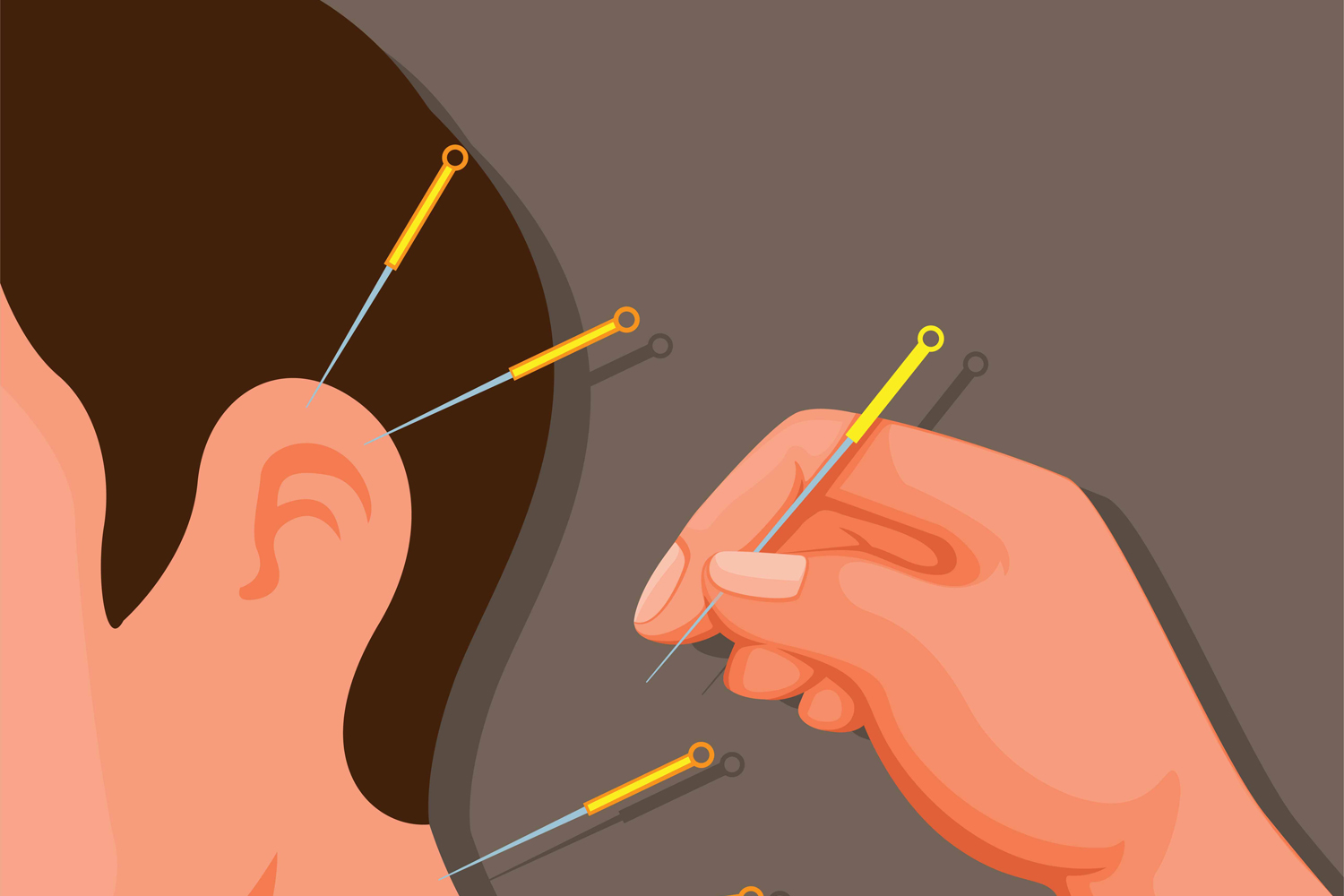A CANCER DIAGNOSIS launches a patient into a new world of medical interventions and a perplexing number of complementary approaches. Well-wishers may tell you that hypnosis helped their sister with breast cancer or that yoga reduced their uncle’s prostate pain. Now patients and clinicians can turn to a new guideline on integrative approaches for managing pain released by the American Society of Clinical Oncology (ASCO) and the Society for Integrative Oncology (SIO)to find therapies supported by research.
Integrative medicine refers to combining conventional Western medicine with evidence-based complementary practices, such as massage, meditation, acupuncture and yoga, to manage cancer symptoms and side effects from treatment. ASCO and the SIO assembled experts in various oncology specialties, nursing, mind-body medicine and patient advocacy to conduct a literature review to inform this guideline. The panel identified 227 relevant studies from 1990 to 2021 and analyzed them to determine which complementary therapies showed solid outcomes for relieving pain and other cancer symptoms.
“This means a lot,” says Ting Bao, director of integrative breast oncology at Memorial Sloan Kettering Cancer Center in New York City, and one of the study’s co-authors. “It’s one of the first official guidelines on how to use integrative medicine approaches to help reduce cancer pain. It’s such an important topic and somehow the evidence hadn’t been summarized.”
The panel made recommendations for therapies for which benefits outweigh risks and noted the strength of each recommendation based on factors including the amount and quality of the research supporting them. Included studies varied greatly as far as sample size, risk of bias, consistency of record keeping and other factors. “The amount of literature was quite impressive,” Bao says.
Pain is the main reason that cancer patients turn to alternative therapies. But pain is complicated. The cancer itself may cause pain, or it may be a side effect of the treatment. The new guidelines separate out which therapies have the most evidence for helping ease different types of pain. “The field as a whole, because of the dearth of high-quality clinical trials, suffers from the clumping effect, where sweeping statements are made about an entire field versus very focused statements based on the evidence for a particular practice,” says Ishwaria Subbiah, a medical oncologist and integrative medicine physician at the University of Texas MD Anderson Cancer Center in Houston. She is glad to see that the recommendations are so specific.
Acupuncture is a winner in the new guideline. The authors cited what they consider an intermediate amount of evidence earning it a moderate recommendation for relieving joint pain related to aromatase inhibitors, a common treatment for hormone receptor-positive breast cancer, and for general cancer or musculoskeletal pain. Reflexology—applying pressure to the feet, hands and ears—and acupressure also received the moderate ranking for patients experiencing pain during systemic therapy for cancer treatment.
Unfortunately, health insurance companies, Medicare and Medicaid cover few integrative therapies. Ishwaria Subbiah, an oncologist and integrative medicine physician at the University of Texas MD Anderson Cancer Center in Houston, urges patients to contact their legislators about expanding coverage for integrative therapies for cancer pain management. “The most movement we can make in that space is with patient voices being front and center,” she says.
Acupuncture, acupressure and reflexology may help with chemotherapy-induced peripheral neuropathy, the recommendations say. Acupuncture and acupressure may benefit patients undergoing cancer surgery or cancer-related procedures such as bone marrow biopsy. One reason that acupuncture figured so prominently in the recommendations, Bao says, is that it’s been better studied with larger trials than some of the other complementary approaches.
“Hypnosis showed pretty impressive results as well,” Bao says. The panel endorsed hypnosis with a moderate recommendation for pain during certain procedures for cancer treatment or diagnosis.
The panel moderately recommended offering massage to patients experiencing pain during hospice or palliative care. Massage also warranted a moderate recommendation for relieving chronic pain after breast cancer treatment, though this evidence was lower quality. “Massage definitely shows some promise so it should be studied more,” Bao says.
The panel recommended some therapies based on weaker evidence, such as yoga for pain after treatment for breast, head and neck cancers, and for aromatase inhibitor-related joint pain in breast cancer, and guided imagery with progressive muscle relaxation for general cancer treatment pain. Music therapy may help relieve pain from cancer surgery, the recommendations stated.
Subbiah emphasizes that a truly patient-centered, holistic approach requires getting to know patients as individuals and figuring out which integrative approaches will work for a person’s day-to-day life. “Integrative medicine is all about what are things you can do for yourself as you go through cancer treatment,” Subbiah says. The physician should equip the patient with the tools needed to reduce their symptom burden and have some control over their cancer experience, she says.
The new guidelines can also empower patients who want to try integrative approaches. “They can bring this paper to their providers to say, ‘See? This shows the evidence,’” Bao suggests.
Long-term cancer survivor Glenn Sabin was diagnosed with chronic lymphocytic leukemia in 1991 and given six months to live. He’s incorporated meditation, dietary supplements, exercise, a plant- and fish-focused diet and many other lifestyle changes that he says can both extend life and mitigate the side effects of cancer treatment. Sabin wants all patients to have access to integrative therapies. “If evidence-based integrative oncology only improved quality of life, that in itself is reason for it to become standard of care.”
Cancer Today magazine is free to cancer patients, survivors and caregivers who live in the U.S. Subscribe here to receive four issues per year.





